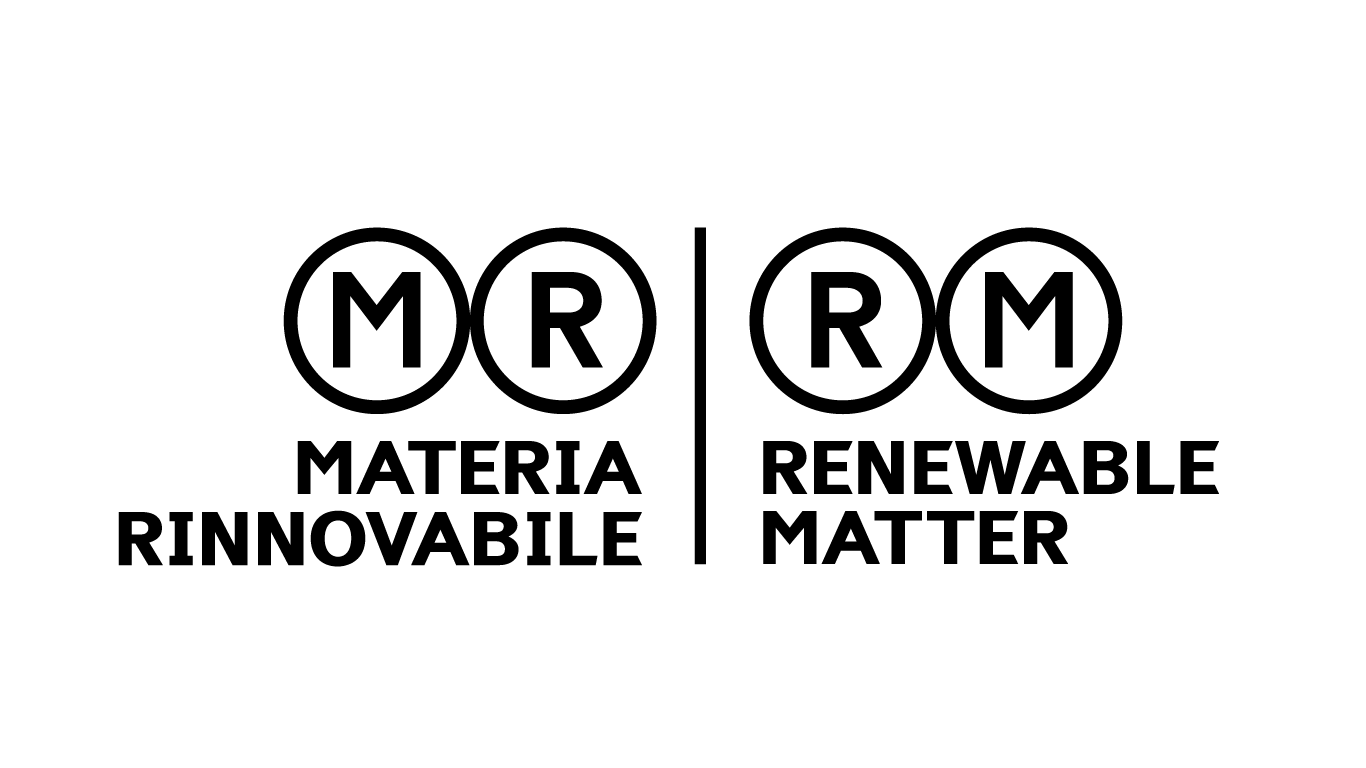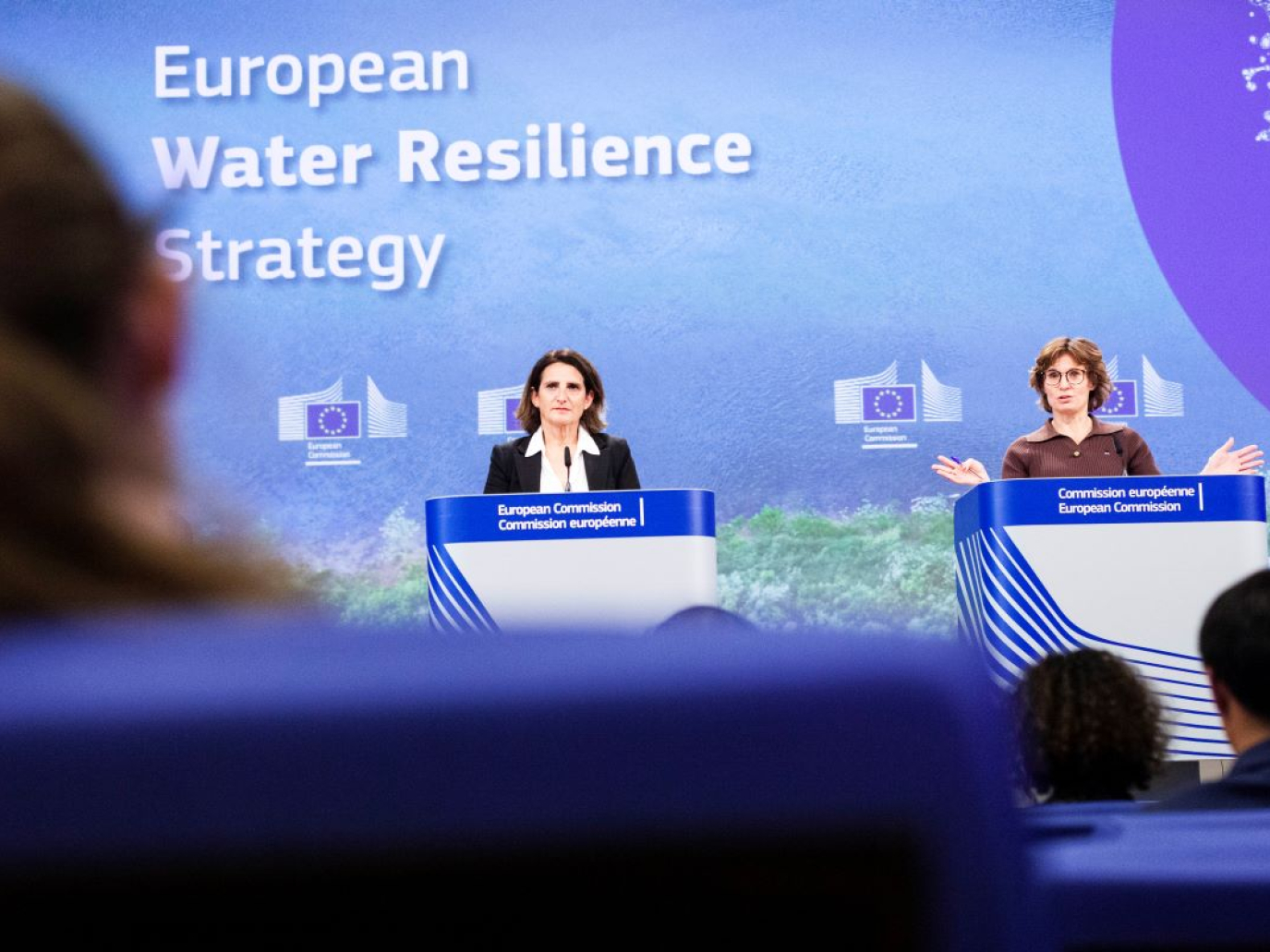This article is also available in Italian / Questo articolo è disponibile anche in italiano
From Bruxelles - A 10% water efficiency target by 2030, but it’s not binding. No new legislation, just greater enforcement of existing rules. More attention is paid to the link between innovation and digitalisation, and efforts in international cooperation are increased. That, in essence, is the message contained in the 29 pages of the European Water Resilience Strategy, presented on the 4th of June by European Commissioner for Environment, Water Resilience and a Competitive Circular Economy, Jessika Roswall.
A strategy that is ambitious only in its announcements, which barely scratches the surface of continuity when it comes to restoring and protecting the water cycle, efficiency and industrial uses, and access to water for citizens. Amid a water crisis that, from Stockholm to Cyprus, is showing structural features — with dwindling reserves, more frequent droughts, and growing competition between domestic, agricultural, and industrial demands — the EU executive has opted for compromise. Yet it firmly recognises water as a strategic economic enabler, cross-cutting, and in need of integrated action.
“Water is not just a resource, it is a source of life,” Roswall declared, describing the strategy as a “toolbox” designed to help member states restore the water cycle.
However, what might have been a historic opportunity to launch genuine governance of the hydrosphere for 420 million European citizens has instead resulted in a cautious compromise. The strategy focuses on voluntary goals and the sense of responsibility of member states, but in doing so, risks crashing against the same inefficiencies that have long prevented real progress in managing our most precious resource.
The European Water Resilience Strategy does not touch on consumption models, does not address the topic of equitable access to the resource, and sets out no clear criteria for prioritising its use, even as chips, batteries, hydrogen, and data centres become increasingly strategic. It’s a line that avoids political confrontation, but one that, from the very moment of its launch, has left many questions open about its real effectiveness.
Actions to restore and protect the water cycle
Presented during the EU Green Week 2025, the Water Resilience Strategy focuses above all on restoring the water cycle in quality and quantity. At the heart of the initiative is the goal of fully implementing existing legislation, such as the Water Framework Directive, the Floods Directive, and the Nature Restoration Law. These are already robust legal instruments, but are often applied unevenly or incompletely across member states.
The strategy advocates an integrated approach “from source to sea”, placing value on natural ecosystems as essential resources for retaining, purifying, and returning water to the environment. Nature-based solutions, such as wetland restoration, reforestation, and river rewilding, are highlighted as preferable to artificial infrastructure.
Nonetheless, the Commission does not entirely rule out measures such as reservoirs or dams, provided they are carefully planned and aligned with a long-term vision based on future climate scenarios. The same reasoning applies to seawater desalination, which, while it can “ensure a steady water supply beyond the hydrological cycle”, is also “costly, very energy intensive, and entails significant environmental impacts”. For this reason, the Commission will support innovation in the sector.
Another central element of the Strategy is the fight against persistent pollutants such as PFAS, which accumulate in Europe’s water bodies and pose serious risks to human health, with annual economic costs estimated between 52 and 84 billion euros. These substances, along with microplastics and other contaminants, must be tackled at source, in line with the Zero Pollution Action Plan.
Special attention is also given to nutrient pollution from agriculture, urban areas, and other diffuse sources. Excess nitrogen and phosphorus in water bodies leads to phenomena such as algal blooms and oxygen depletion, which are harmful to aquatic biodiversity and human health. The socio-economic losses linked to nitrogen pollution alone are estimated between 75 and 485 billion euros per year.
Towards a “water smart” and competitive economy
Water is not only a public good, but also a competitive asset for European industry. Strategic sectors such as semiconductors, batteries, hydrogen, and data centres require vast quantities of ultra-pure water, often in areas already experiencing water stress. According to the report, The Value of the EU Investing in Water by Water Europe, industrial water demand is set to rise significantly, posing environmental and social risks if efficiency and recycling are not addressed.
In the semiconductor sector, Taiwan’s TSMC, which holds 61% of the global market, reached a water recycling rate of 86% in 2022. In comparison, European firms NXP and STMicroelectronics (each with about 3% of the market) stood at 45%. Producing wafers requires, on average, 21 litres of water per square centimetre, a figure that highlights the potential impact on the local territory.
A similar picture emerges in the field of electric batteries. Under the Net Zero Industry Act, the EU aims to meet 90% of its annual battery demand domestically by 2030. However, without increasing water productivity, this would mean an additional 26 million cubic metres of water consumed by 2030, rising to 56 million by 2040
The projected output (3.4 million 50-kWh batteries per year) could therefore carry a significant environmental cost. Some plants, such as Tesla’s Berlin gigafactory, have already faced production delays linked to water availability issues.
Yet the Water Resilience Strategy contains no explicit framework to prevent water-intensive industries from setting up in areas with low water availability. There is no mention, for instance, of binding territorial mapping that would guide such decisions based on resource sustainability.
Instead, the Commission advocates increased use of satellite data to improve monitoring and planning, while leaving considerable discretion to member states, in recognition of territorial differences.
Water efficiency: non-binding target set at 10%
Even when it comes to water efficiency targets, the EU stops short of setting binding objectives at the European level. Instead, each member state will be invited to define its own, based on national and river basin characteristics, and the productive sectors involved. The EU aims to improve water efficiency by 10% by 2030.
To this end, the Commission will work with member states to develop a common methodology for setting national targets (some countries, such as France, have already introduced a 10% target for water withdrawals by 2030). However, the strategy makes no mention of how to avoid the rebound effect, the phenomenon in which gains in efficiency are offset (and often exceeded) by overall increased water withdrawals, production activities, or consumption itself.
Measures on reuse in the European Water Resilience Strategy
Another key theme is water reuse. At present, only 2.4% of wastewater is reused within the EU, with significant variation ranging from zero to 80% depending on the country. The Commission is committed to promoting safe reuse in agriculture, industry, and energy production, providing guidance and technical support.
The legislation on water reuse will be reviewed in 2028. Water losses from public supply networks, which account for a large part of water waste (given that public distribution accounts for 13% of total use), will be addressed through digital tools such as real-time monitoring and predictive maintenance systems.
Agriculture, which accounts for 51% of European water consumption, faces a dual challenge: reducing its impact on water while contributing to climate resilience. The Common Agricultural Policy will be one of the main channels for funding sustainable practices. However, the agri-food sector, including production, processing, and distribution, remains one of the biggest sources of pressure on both the quality and quantity of water.
Investments: the role of the EIB
A central pillar of the Water Resilience Strategy is the relaunch of investment, with a key role assigned to the European Investment Bank (EIB). On the 4th of June, the EIB committed to mobilising 15 billion euros over the next three years to reduce pollution, prevent waste, and support innovative businesses in the sector.
The approach is not limited to large-scale projects, but also aims to improve access to credit for local initiatives, including water cycle restoration, aquifer recharge, upgrading the networks, and the development of “sponge cities”.
“I fully support the Commissioner’s push for digitalisation, innovation, and investment — including the 15 billion euros commitment from the European Investment Bank (EIB). But if we want to be serious about delivering tangible water resilience, we must go further,” commented on LinkedIn Thomas Bajada, rapporteur for the Strategy at the European Parliament, who voted on his recommendations on the 7th of May.
Among Bajada’s proposals are the adoption of ambitious targets for water efficiency and withdrawls at river basin level, robust action against per- and polyfluoroalkyl substances (PFAS) and other emerging pollutants (starting with a phased phase-out from consumer goods) and the creation of a dedicated European fund for water resilience in the next Multiannual Financial Framework (MFF). Such a fund, he stressed, should be genuinely accessible to those most in need: farmers, local authorities, and businesses.
“The Commissioner rightly pointed out that 'water is managed at many levels', but without strong EU leadership, our collective efforts risk being fragmented and insufficient,” Bajada concluded.
The Strategy itself notes that without increased public and private investment across all stages of water management, progress towards resilience will fall short. At present, annual investment stands at around 55 billion euros, but a further 23 billion euros per year, equivalent to 0.1% of EU GDP, would be needed to fully implement existing legislation.
Ensuring clean and accessible drinking water
As highlighted in the European Water Resilience Strategy, drinking water and sanitation are human rights recognised and guaranteed by European directives and substantial investments. However, even today, 1.5% of the population in the EU does not have adequate sanitation, and 4% does not have access to safe drinking water.
The Strategy also recognises the central role of consumers. In particular, tools such as the Ecolabel and the Ecodesign Regulation will help citizens choose efficient products, while new labelling systems such as the Unified Water Label will raise awareness of water use.
In the fields of construction and urban planning, water efficiency is to be pursued alongside energy efficiency. The new package on the energy performance of buildings and the New European Bauhaus initiative are identified as opportunities to embed water resilience into urban environments, including through the active involvement of citizens.
Finally, according to the Strategy, water pricing must be fair and transparent, taking into account actual consumption, environmental impact, and ability to pay, in order to promote virtuous behaviour.
Cross-border cooperation in the Water Resilience Strategy
Lastly, the importance of cross-border cooperation is underscored. Europe is home to 75 international river basins, and while EU directives call for coordination between countries, much remains to be done to ensure coherence in the measures adopted by upstream and downstream countries.
To strengthen the shared governance of water resources, the Strategy reiterates support for the UN Water Convention. It also notes that, through the Global Gateway initiative, the EU is already mobilising over 1.2 billion euros for projects across 18 transboundary river basins in Africa and Central Asia, in collaboration with the EIB and financial institutions from member states.
Cover: Teresa Ribera e Jessika Roswall photographed by Nicolas Landemard © European Union, 2025



